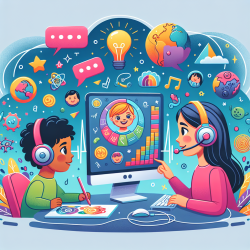As the landscape of psychotherapy continues to evolve, the advent of video conferencing psychotherapy (VCP) has presented both opportunities and challenges for child therapists. A recent study titled Child therapists’ views and experiences of video conference psychotherapy with children offers valuable insights into the practical applications and potential pitfalls of VCP. This blog aims to distill the findings from this study to help practitioners enhance their skills and encourage further research.
Benefits and Opportunities of VCP
The study highlights several advantages of VCP that can significantly improve the accessibility and flexibility of therapy for children and their families:
- Enhanced Accessibility: VCP allows therapists to reach children in remote or underserved areas, ensuring that geographical limitations do not hinder access to therapy.
- Flexibility and Comfort: Both therapists and clients benefit from the convenience of conducting sessions from home, reducing the time and cost associated with travel.
- Increased Parental Involvement: Fathers, in particular, are more likely to participate in VCP sessions, contributing to a more holistic approach to therapy.
- Cost-Effectiveness: VCP reduces the financial burden on families by eliminating travel expenses and allowing for more flexible scheduling.
Challenges and Limitations of VCP
Despite its many benefits, VCP also presents several challenges that therapists must navigate:
- Therapeutic Relationship: Establishing and maintaining a therapeutic relationship can be more difficult in a virtual setting, especially with younger children who may struggle with attention and focus.
- Privacy Concerns: Conducting therapy sessions from home can compromise privacy, particularly when parents or other family members are present.
- Technological Issues: Internet connectivity and technical problems can disrupt sessions, making it challenging to maintain consistent communication.
- Lack of Materials: The absence of physical therapy tools and toys can limit the effectiveness of certain therapeutic techniques.
Practical Tips for Practitioners
Based on the study's findings, here are some practical tips for therapists to enhance their VCP practice:
- Prepare the Environment: Ensure that both the therapist's and the client's environments are conducive to therapy. This includes minimizing distractions and ensuring privacy.
- Use Digital Tools: Leverage digital tools and resources to replace physical therapy materials. Virtual games and interactive activities can be effective substitutes.
- Establish Clear Boundaries: Set clear rules and expectations for behavior during sessions to maintain a structured therapeutic environment.
- Stay Technologically Prepared: Ensure that both parties have reliable internet connections and backup plans in case of technical issues.
Encouraging Further Research
While the study provides a comprehensive overview of the benefits and challenges of VCP, there is still much to learn. Practitioners are encouraged to engage in further research and share their experiences to contribute to the growing body of knowledge on this topic.
To read the original research paper, please follow this link: Child therapists’ views and experiences of video conference psychotherapy with children.










